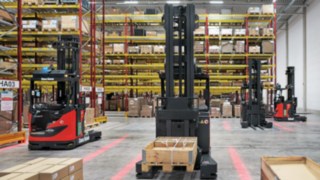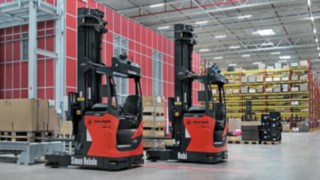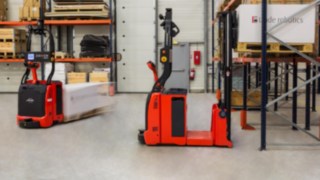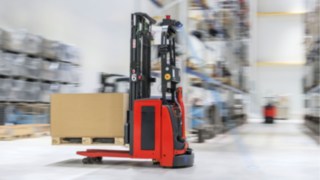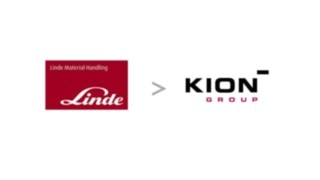Simon Hegele Boosts Efficiency with Warehouse Automation
Increased Efficiency, Reliable Processes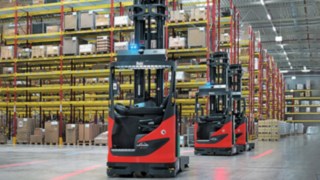
Kemnath, Bavaria, is home to a major hub operated by logistics service provider Simon Hegele. Precision is paramount here—every route should be efficient and every process straightforward. After all, the company provides just-in-time delivery to the production facility of a leading global medical technology manufacturer, supplying a wide range of components from delicate small parts to CT scanner modules weighing several metric tons. The variety of materials is huge, but the healthcare customer’s requirements tend to be very difficult to plan—and qualified skilled workers are extremely hard to find in this part of Bavaria. So, how does Simon Hegele still manage to deliver on its claim “We make healthcare work” every day?
Using Automation to Address the Skilled Worker Shortage
Kemnath, around an hour’s drive north-east of Nuremberg, has more industrial jobs than inhabitants—a fact that doesn’t exactly make the competition for workers any easier. Site Manager Oliver Sitzmann sums up the situation: “We are in the heart of the countryside here. It’s almost impossible to find forklift drivers anymore.” Back in 2022, as plans were being drawn up for the construction of a 20,000-square meter logistics center with around 50 new jobs, one thing was clear: without warehouse automation the project would not be feasible. “We really believed in this technology right from the start,” confirms Managing Director Mike Winter.
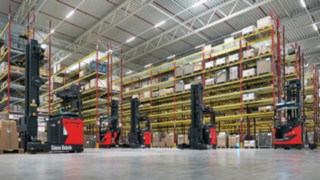
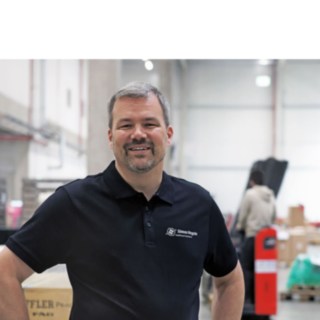
We are the first site in the company to use automated trucks and an automated small parts warehouse.
Oliver Sitzmann, Site Manager, Simon Hegele Kemnath
Holistic Planning: The Key to Successful Warehouse Automation
Simon Hegele chose Linde Material Handling as their partner right from the start of this ambitious project. “The call for tender came in summer 2022, including specifications and the initial design of the facility. The scale and complexity were exceptional, even by our standards,” recalls Intralogistics Consultant Thomas Eußner from network partner Ernst Müller Fördertechnik. The planning process started with two key questions: which types and how many AGVs were needed, and how should routes, charging points, and staging areas be designed? The ground conditions were also checked at an early stage to avoid costly rework. The end result was a comprehensive automation concept, including virtual simulation. A visit to a Linde MH reference customer ultimately convinced those responsible at Simon Hegele to choose the Linde concept with five Linde R-MATIC driverless reach trucks.
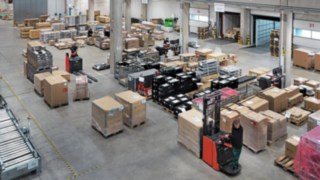
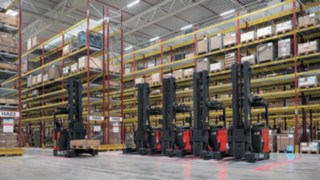
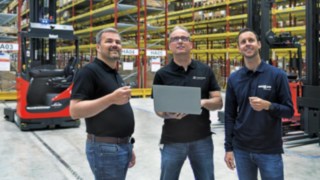
Seamless Integration, Optimal Automation
When it comes to automation projects, the hardware is only as good as the software run on it. The key to success lies in the intelligent integration of the AGV solution into the existing system landscape—a task that Simon Hegele’s IT department tackled together with an integrator from Linde Material Handling. The goal was to link the physical movements of the Linde R-MATIC reach trucks with the entries in the warehouse management system (WMS) in order to make every process traceable. The Linde control system acts as the control center for warehouse automation here—it assigns jobs from the WMS to the AGV fleet and reports back the status of each work step in real time. Thanks to extensive virtual testing, the system has been performing reliably since September 2024.
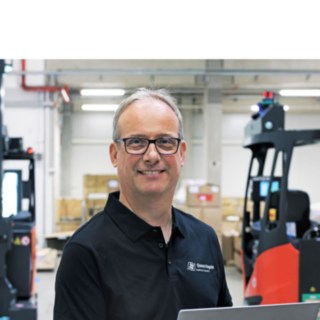
The whole thing can only work if the job allocation, the truck’s movements, and feedback to the system are fully synchronized.
Marcus Wieland, Head of IT Project Management at Simon Hegele
Efficient Processes in Detail: The Automated Goods Flow
But what specific transport jobs do the five Linde R-MATIC’s take on at Simon Hegele? Put simply, their job is to store and retrieve around 40 Euro pallets and pallet cages per hour. When looked at in detail, the process is far more complex:
1. When primary products are delivered, they are labeled and sent via a conveyor system to shape control for scanning, measuring, and checking.
2. Once the unit has reached the last checkpoint on the conveyor system, the WMS generates a transport order, specifying what it is, how big it is, and where it needs to go.
3. The Linde control system processes this information and assigns a transport order with a suitable storage location to one of the automated reach trucks.
4. A Linde R-MATIC reach truck collects the pallet or pallet cage from the conveyor system and transfers it to the wide-aisle warehouse with 22 rack aisles.
5. If the healthcare customer requests materials, the retrieval process starts—and the automated reach trucks provide the required goods for manual order picking.
Each goods movement is logged digitally in the WMS, allowing Simon Hegele employees to track the status of pickup areas and pending or ongoing orders on their workstation monitors at all times. The status of the AGV fleet is also displayed along with important information, such as order readiness, transport status, and fault messages. The logistics experts can also see immediately which truck is currently working on which order. The movement of the AGV and the exact position of the truck in the warehouse are shown to ensure processes are as reliable as possible and keep manual interventions to a minimum.
Whether full or partial picking, when our staff in the picking zone receive an order, they can use a handheld scanner to have a Linde R-MATIC bring them the Euro pallet or pallet cage with the order for picking.
Oliver Sitzmann, Site Manager Simon Hegele, Kemnath
Human and Machine as a Team: Acceptance Is Critical to Success
As in many other companies, the employees at Simon Hegele were initially skeptical about their automated colleagues. The management team took their concerns seriously and came up with a simple but effective idea to address them: The team was allowed to give the five automated trucks names. Today, “Hebert”, “Simon Hebele”, “Store-Me”, “Robo-Lift”, and “Hubi” are all established members of the team, helping to lighten the workload for their human colleagues. The lesson learned here is that automation works best when you involve your employees in the process, with open communication, clear goals, and, of course, a little humor!
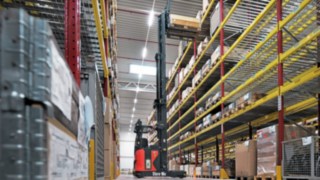
Simon Hegele
The Simon Hegele Group is one of the most innovative service providers covering a full range of complex supply chain processes. For many years, the guiding principles “More than just logistics” and “We make healthcare work” have been driving forces behind the evolution of the group and its services. Simon Hegele provides customers from the healthcare, pharmaceutical, industrial, and retail sectors with highly specialized value-added services individually tailored to the customer’s processes at more than 50 locations worldwide.
